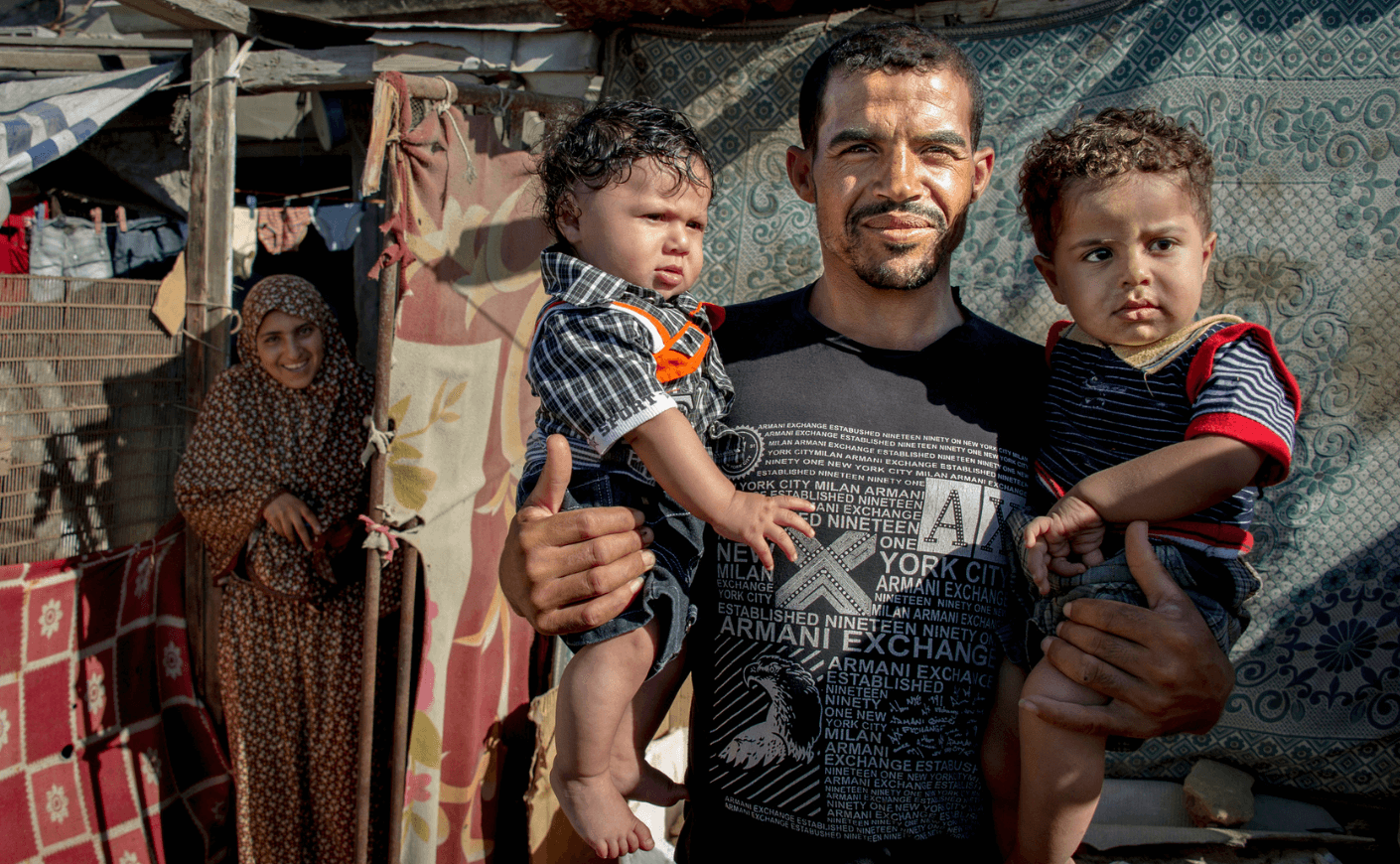I’m returning to Israel and Gaza, as soon as our Center for Mind-Body Medicine (CMBM) Gaza team establishes a secure office, hopefully in the next few weeks.
For more than 20 years, our teams of clinicians, educators, and other community leaders in Gaza and Israel have been the only groups delivering greatly needed, warmly welcomed programs of population-wide trauma healing and resilience-building for both Israelis and Gazans. And as I get ready to reunite with them, I’m very happy to invite President Trump, who has recently taken an interest in Gaza, to come with me — so he can consider partnering with the people of Gaza to rebuild their home.
At the beginning of February, President Trump declared that the US would “take over” Gaza, “resettl[ing] its people permanently in new homes…in beautiful communities,” where he later added “they can be happy and not be shot and not be killed.”
President Trump was, of course, right that the people of Gaza, like all of us, want to live safely and happily. And his call for redevelopment and the creation of a Gazan “Riviera of the Middle East” had resonance for many Gazans. However, the accuracy of his diagnosis was overshadowed by a flawed treatment plan, to which I’d like to offer an alternative, one which will realize the President’s vision, even as it mobilizes Gazans’ ingenuity and their capacity for self-help: engaging the people of Gaza in rebuilding and improving the “nice homes” they actually had before the current war, making them active partners in and beneficiaries of the reconstruction of their “beautiful communities” and the land on which they live.
I believe this is possible because I have, since 2002, visited Gaza as well as Israel some 20 times, and because I’ve seen what Gazans are capable of accomplishing. I have watched with awe as the men and women who lead our Gaza program mobilize hope and effective self-care and mutual help among some of the most marginalized members of their isolated and beleaguered territory — children with Down Syndrome, disturbed and disturbing students and their overwhelmed teachers, amputees struggling with inadequate prostheses. I have watched the children of Gaza embrace every available educational opportunity and felt the frustrated desire of young adults who desperately want to bring innovation to Gaza’s public services and businesses and connect with the larger world from which they have been excluded.
Since Hamas’s October 7th 2023 massacre, the people of both Israel and Gaza have been on my mind, and in my heart. Each morning since then, I’ve rushed first thing to my WhatsApp to see if anyone on either team has been killed, to read accounts of innocents who died on Israeli kibbutzim and in Gaza apartments.
Before entering Gaza, I’ll be working with the seasoned and dedicated psychologists and the retired Air Force Lieutenant Colonel who lead our Israeli team. They’ll update me on the challenges and satisfactions of bringing CMBM’s evidence-based program of self-care and mutual support to Israelis who need it most, in an entire nation haunted and traumatized by images of October 7th, understandably horrified by the emaciated condition of the recently released hostages, and deeply threatened by the prospect of a resurgent Hamas and a nuclear Iran.
As they bring me to meet the men, women, and children to whom they’ve brought hope and a measure of peace, our Israeli leaders will ask me, with concern, as they have since the war began, about Jamil Abdel Atti, PhD, the psychologist who leads our Gaza program.
Several times a week, for the last 15 months, Jamil has described, in Zoom calls and WhatsApp chats, for me his constant movement — a dozen different improvised shelters as he fled from his destroyed home in Gaza City to Khan Younis, and Rafah, and back to Khan Younis, and then the Middle Region. He has sent me texts and pictures of the work his team has been doing in shelters and on the street, giving children and adults — 175,000 of them since the war began — the same simple self-care tools that our Israeli team and our trainees all over the world are using: slow, deep breathing to quiet the stress that constantly agitates the days and ruptures the sleep of Gazans; shaking and dancing to melt trauma-frozen bodies; drawings to express fears and hopes too deep for words. Our Gaza team, grown to 80 since the war began, provides small supportive groups — safe, emotional havens — where kids and their families can share the grief, fear and anger that overwhelm them.
When I go into Gaza, I’ll work side by side with our team and meet hundreds of the people whom they serve. And I hope our President, who has committed himself to taking a leadership role in rebuilding Gaza, as well as in ensuring the return of the hostages and ending the war, will want to come with me.
In Gaza, I want our President to hear from people who have survived the terrors of a terrible war and the death of people they love, with little food, unclean water, and almost no shelter, to appreciate their courage and strength. I want him to listen to them and understand that if he has been told that “none of them want to return” to their demolished homes, he has been poorly informed.
I want President Trump to see children, who in spite of their losses, are using the techniques Jamil and his team have taught them to quiet anxiety, and are playing, in the midst of the total destruction he has accurately noted, with joy and creativity. I want him to speak with the women and men who are streaming, on donkey carts and bicycles, and on foot, back to the destroyed homes that they are determined to rebuild, the farmers who are finding scarce seeds to replant fields charred and scarred by bombs.
I think if President Trump were to come with me, he would admire the determination and ingenuity, and, yes, entrepreneurship, of a people who have, so long as I’ve known them, and for many years before, been able to make charming homes and thriving businesses out of rare and unpromising raw materials.
The President says he’s interested in creating a “Riviera of the Middle East” in Gaza. I believe if he does the due diligence that befits a major developer, he will find that the citizens of Gaza are the workers he would want. I have rarely met a more dedicated people, a workforce that is, truth be told, at least as committed and industrious as Americans. And I believe he will be pleased to learn that fair wages in Gaza are far less than they would be in the US: $4,000 to 8,000 a year vs $30,000 to 40,000 for American construction workers — and $15,000 to 20,000 for a qualified Gaza engineer, versus $90,000-120,000 for their American counterpart.
It means everything to the people of Gaza to rebuild and live in the land they love. I think it could be very pleasing to President Trump — and to the Arab states and to many Israelis as well — to support them in this heroic and peaceful development effort.
President Trump wants to be an historic peacemaker. The forced removal of Gazans that he initially proposed is already being denounced as “ethnic cleansing” and a “war crime” by most of the world, as well as the countries that would be destabilized by the influx of these refugees. Engaging the people of Gaza as partners in rebuilding their world, leading the effort to make Gaza the peaceful destination for commerce and tourism, education and culture, to which its people already aspire, would be an opportunity for President Trump to exhibit the heroic, peacemaking statesmanship to which he aspires.
James S Gordon, MD, a psychiatrist, is the Founder and CEO of The Center for Mind-Body Medicine and the author of Transforming Trauma: The Path to Hope and Healing.









